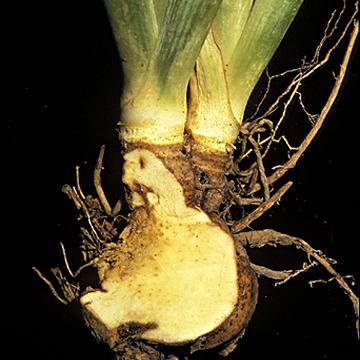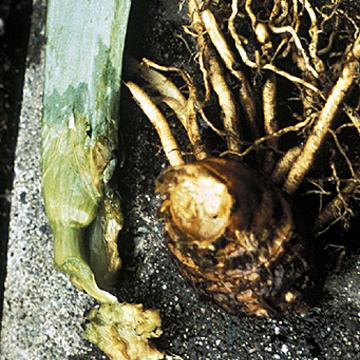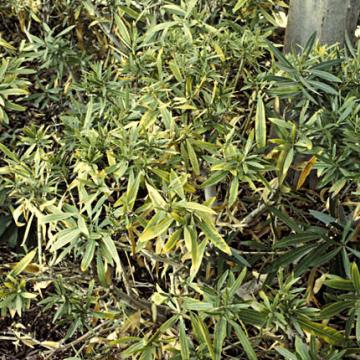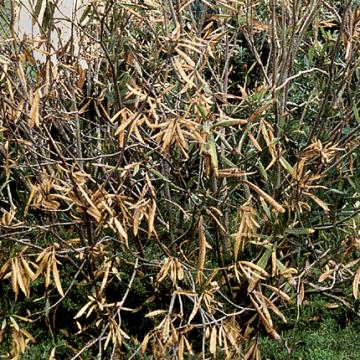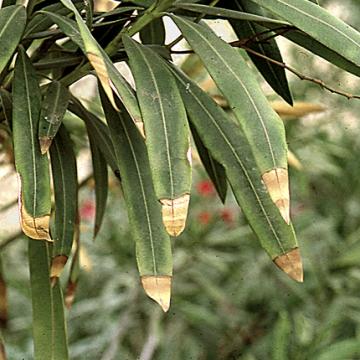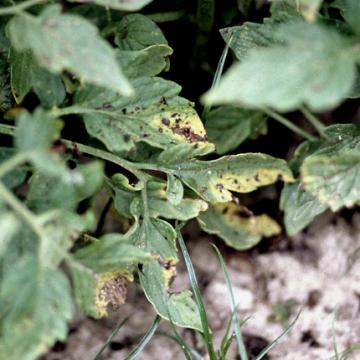DISEASE: Bacterial stem and rhizome rot
HOST: Iris
Iris stem and rhizome with brown, discolored, rotted portions.
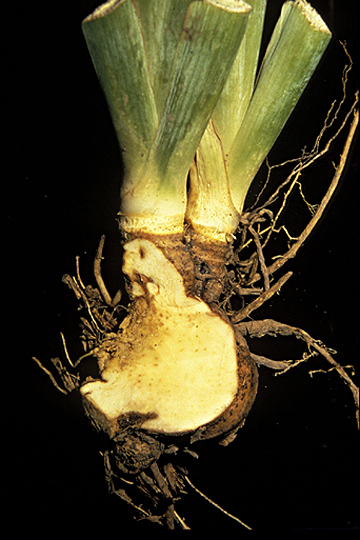
Bacterial stem and rhizome rot | Iris
DISEASE: Bacterial stem and rhizome rot
HOST: Iris (Iris sp.)
PATHOGEN: Burkholderia gladioli pv. gladioli
PATHOGEN SYNONYM: Pseudomonas gladioli pv. gladioli
SOURCE: R. Raabe
DISEASE: Bacterial stem and rhizome rot
HOST: Iris
Mushy rot of stems and rhizomes are characteristic of advanced stage of the disease.
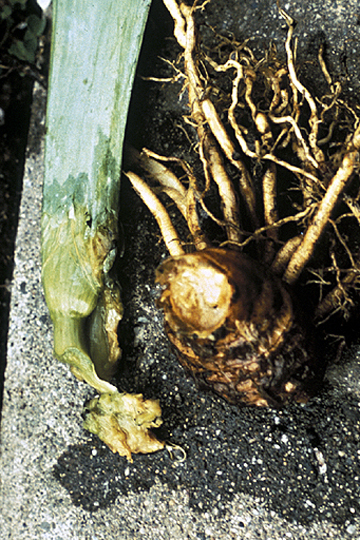
Bacterial stem and rhizome rot | Iris
DISEASE: Bacterial stem and rhizome rot
HOST: Iris (Iris sp.)
PATHOGEN: Burkholderia gladioli pv. gladioli
PATHOGEN SYNONYM: Pseudomonas gladioli pv. gladioli
SOURCE: R. Raabe
DISEASE: Oleander leaf scorch
HOST: Oleander
Diseased plant with scalloped, yellowish leaves. This usually is followed by dieback of twigs and branches. Plants often die 2 years after infection.

Oleander leaf scorch | Oleander
DISEASE: Oleander leaf scorch
HOST: Oleander (Nerium oleander)
PATHOGEN: Xylella fastidiosa
SOURCE: S. Purcell
DISEASE: Oleander leaf scorch
HOST: Oleander
Oleander with symptoms of severe scorch.
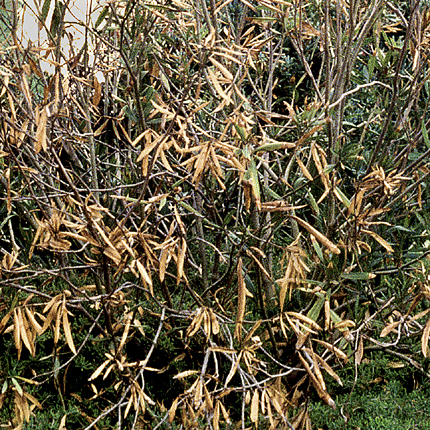
Oleander leaf scorch | Oleander
DISEASE: Oleander leaf scorch
HOST: Oleander (Nerium oleander)
PATHOGEN: Xylella fastidiosa
SOURCE: M. Blua
DISEASE: Oleander leaf scorch
HOST: Oleander
Oleander with scorch symptoms primarily at leaf tips, an early stage of disease.
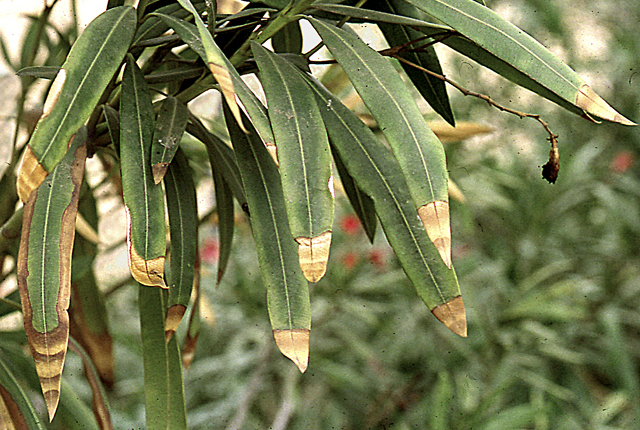
Oleander leaf scorch | Oleander
DISEASE: Oleander leaf scorch
HOST: Oleander (Nerium oleander)
PATHOGEN: Xylella fastidiosa
SOURCE: M. Blua
DISEASE: Syringae leaf spot
HOST: Tomato
Leaves with brown necrotic lesions and chlorotic margins. Symptoms vary greatly among cultivars. Some have black or brown lesions with bright yellow, chlorotic areas and others do not have yellowing.
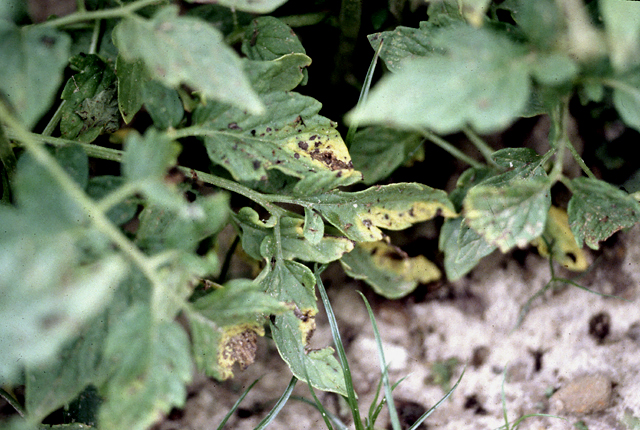
Syringae leaf spot | Tomato
DISEASE: Syringae leaf spot
HOST: Tomato (Lycopersicon esculentum)
PATHOGEN: Pseudomonas syringae pv. syringae
SOURCE: R. Gitaitis


